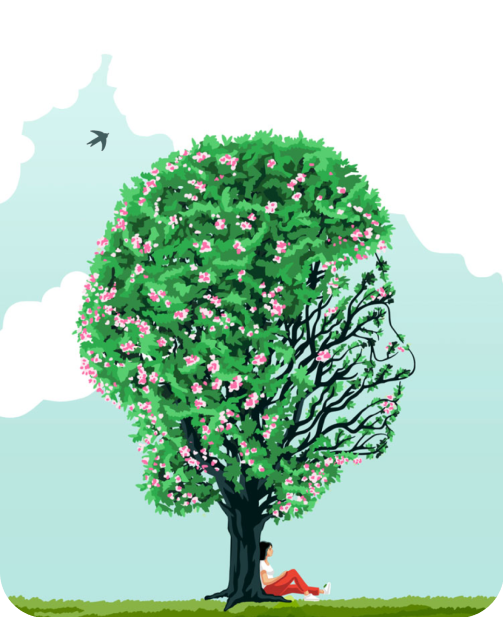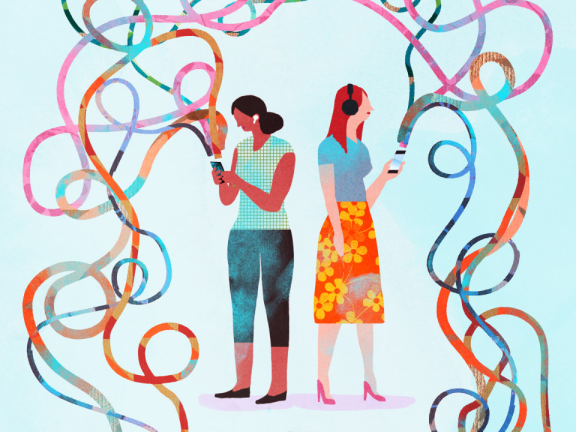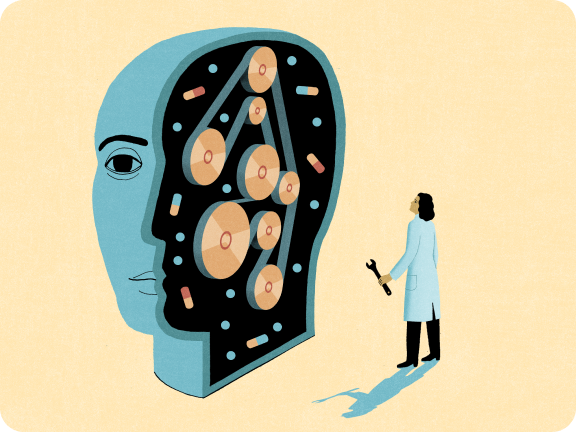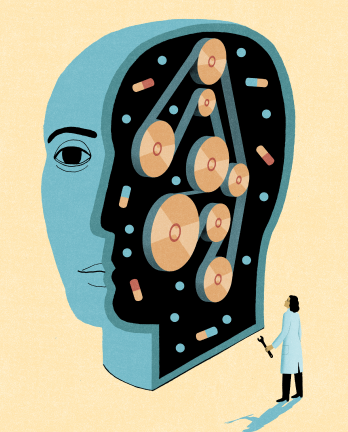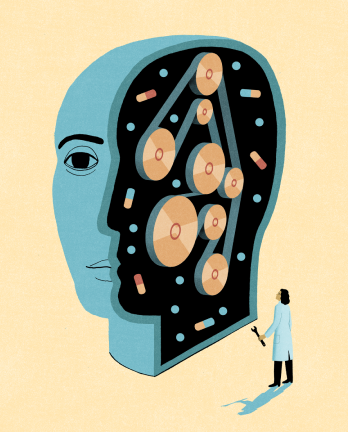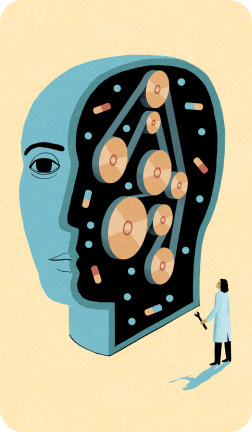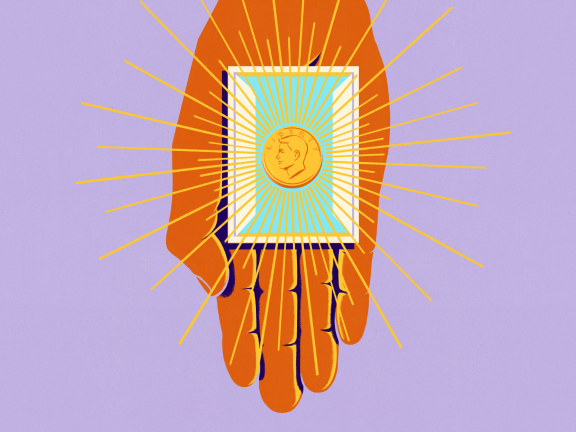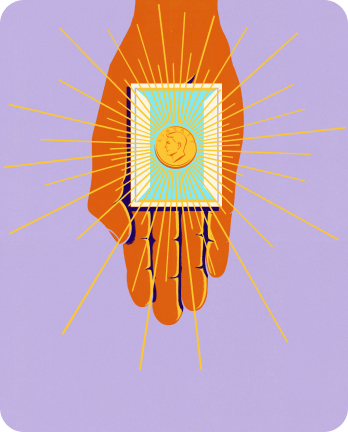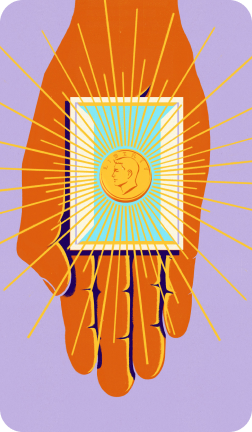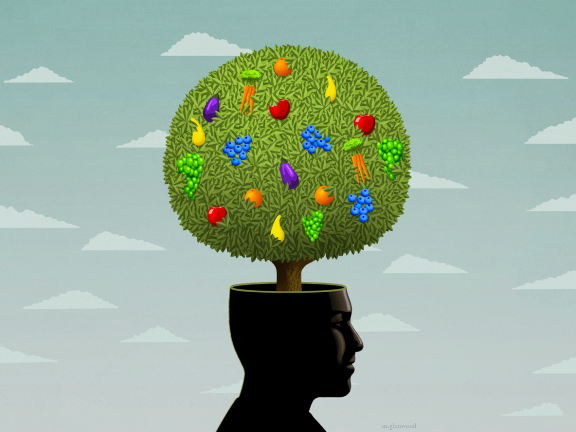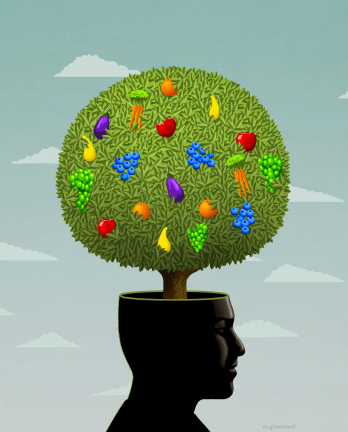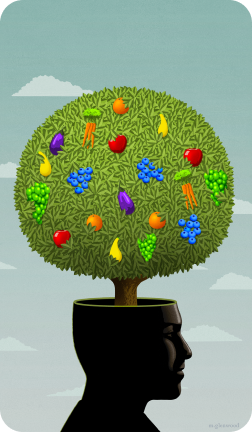Partner Content
This content was paid for by Jefferson Enterprise and created by INQStudio. The news and editorial staffs of The Inquirer had no role in this article’s creation.
This content was paid for by Jefferson Enterprise and created by INQStudio. The news and editorial staffs of The Inquirer had no role in this article’s creation.
Early nurturing paves the way for kinder, more compassionate adults. More of us can be part of the solution.
Early nurturing paves the way for kinder, more compassionate adults.
More of us can be part of
the solution.
Early nurturing paves the way for kinder, more compassionate adults. More of us can be part of the solution.
kindness
Early nurturing paves the way for kinder, more compassionate adults. More of us can be part of the solution.

The good news? Extended supportive communities can promote healthier behavior and reverse this learning by modeling, teaching, and cultivating kindness.
The Developing Brain
But first, we need to understand the unique developmental characteristics of the young brain.
The prefrontal cortex, the brain region responsible for impulse control, future planning, and decision making, “is not fully developed in women until their early twenties, and in men until their late twenties,” says Jeanne Felter, associate dean for academic affairs at Thomas Jefferson University’s College of Population Health. “And so adolescents and emerging adults are walking around with a cortex that’s kind of flapping.” Young people’s brains tend to cede decision making to the brain stem, which controls our impulsive responses.
Then there’s the amygdala, which “is really like a smoke detector,” says Felter. “It’s constantly evaluating the environment for threats, and kids who have experienced a lot of trauma are sensing threats even when they don’t exist.” Adverse childhood experiences, or ACEs, can have a lasting impact on how kids react to the world around them that follows them into adulthood.
It Starts at Home
Much of children’s behavior is rooted in their home life—their first social learning environment. Early bonding is a powerful process for shaping a child’s brain. A healthy home life cultivates kindness, trust, security, and the instilling of values, and the youthful brain’s remarkable plasticity allows for positive experiences and interventions to shape and organize it. That’s why strategies such as cognitive-behavioral therapy, family counseling, and positive parenting techniques can actively steer a child’s developmental trajectory toward healthy behaviors.
However, households can be breeding grounds for trauma triggers as well. Harsh parenting styles, defined as verbal abuse, violence, or neglect, contribute to aggressive behavior in children and teens and can lead children to believe that aggression is a legitimate way to resolve conflict. Approximately one in four children experience abuse or neglect in their lifetimes. A parent is the perpetrator 91% of the time.
“If you didn’t have somebody who was teaching you to regulate, you’re more susceptible to becoming quickly dysregulated,” explains Felter. A nurturing home is an important space for children to learn how to cope with trauma by seeing a parent model healthy behaviors.
Beyond the Front Door
Then there’s school, where kids learn to negotiate social hierarchies, build friendships, face competition, and cope with stress, all of which contribute to their emotional and cognitive growth.
Certain aspects of schooling can be minefields of trauma for young people. Exposure to bullying—as a victim, a bully, or even as a witness—can lead to alterations in the brain regions that negatively influence our ability to control our emotions. The relentless torment of bullying activates kids’ fight-or-flight circuitry. It’s a big problem: Around 20% of students in the U.S. report being bullied at school, and 46% of U.S. teens ages 13 to 17 have been victims of bullying online.
On the other hand, school and out-of-school-time programs can be places where healthy behaviors are taught, reinforcing habits learned in healthy homes or filling the gap for kids with unstable home lives.

We can build emotional vocabulary in kids. They can understand [these concepts] if it’s fun.”
DR. Nicole Johnson
program director of Thomas Jefferson University’s Community and Trauma Counseling Program
Teaching “prosocial behavior,” defined as behavior through which people benefit others, can reduce aggressive conduct. One study of middle school students near Rome, Italy, showed clear promise for the approach. After six months, students who were taught prosocial skills such as helping others, sharing, and conflict resolution showed an increase in helping behavior and a decrease in physical and verbal aggression. “Overall, findings suggest that promoting prosocial behavior may serve to counteract aggressive conduct and enhance academic achievement during adolescence,” the study’s authors wrote.
And although executive function is not fully developed in kids, they are capable of understanding their emotions and intercepting their knee-jerk reactions to some degree. Nicole Johnson, program director of Thomas Jefferson University’s Community and Trauma Counseling Program, advocates teaching kids “how to speak through their emotions” and help their still-maturing prefrontal cortexes take over in stressful situations.
“Whenever I work with kids, I show them how to control their emotions by folding my four fingers over my palm and thumb,” she says, a simple visual representation of the prefrontal cortex taking control. “We can build emotional vocabulary in kids. They can understand [these concepts] if it’s fun, and if they don’t know the words, they can understand the picture.”



Shaping a Kinder Future
Society plays an indispensable role in raising kindness. The adage “It takes a village to raise a child” speaks to our collective responsibility to foster healthy development in kids in order for them to become emotionally healthy adults. The idea that just two adults—let alone one—are solely responsible for raising one or more children is a 20th-century phenomenon.
Raising children was once a decidedly communal affair that happened in extended multigenerational family structures. At a time when 66% of parents report being burned out, reembracing this collective responsibility and surrounding kids with loving support from a broader network is one of the keys to shaping the next generation into kind and compassionate adults. “The most healing interventions for trauma are consistent, safe, nurturing relationships,” says Felter. So what can we do to help?
Parenting is hard. According to a Yale University study, a child under the age of five will throw nine temper tantrums a week, on average. That’s more than one a day, enough for any parent to wonder whether the child is possessed.
This may come as a relief for parents of tantrum-throwing children, but it also means parents must find patient and constructive ways to deal with these outbursts among all the other responsibilities, strains, and stressors in their lives.
Some countries, such as Sweden, have become models for comprehensive family support at the national level, funding generous parental leave policies that encourage active participation from parents. UNICEF ranks the U.S. dead last on offering family-friendly policies, including paid parental leave, compared to 40 other high- and middle-income countries.
One innovative counseling method helps children express themselves through play, making emotional space for kids—and providing crucial insight for therapists.
“Play therapy creates conditions in which children feel safe and secure to express themselves,” says Katharine Wenocur, coordinator of the child trauma and play therapy concentration at Thomas Jefferson University. Play helps kids describe ideas and circumstances in ways they’re often not equipped to convey in nonplay situations.
The Association for Play Therapy, a national group of mental health professionals interested in exploring the therapeutic power of play, says the approach is particularly effective for kids ages three to 12, although it has also shown promise with teens and even adults. With familiar toys and activities tailored to the children’s interests and sessions taking place in a trusting and safe environment, play therapy gives clinicians a critical “glimpse into [kids’] inner worlds,” says Wenocur. “It allows kids to tap into their natural strengths and build on areas that may be compromised by early exposure to trauma.”
A review of 39 studies of mentoring found that it had positive effects on aggressive behavior and delinquency. Another impact study of community-based mentoring found that youths who had been mentored by an adult for 18 months were 33% less likely to have hit someone compared to a control group.
Big Brothers Big Sisters of America, a nationwide mentorship program, pairs children with adult volunteers who offer friendship and guidance. A survey of program alumni found that 89% credited their relationship with their “Big,” as the program’s adult mentors are called, with enhancing their emotional regulation skills. Additionally, 93% reported infrequent or reduced bullying behaviors, and 95% noted satisfactory or improved behavior in school.
A study of the Chicago program Becoming a Man, an intervention for male youth in grades seven through 10 from high-crime neighborhoods, found that students assigned to the program experienced a 44% reduction in violent crime arrests compared to a control group of students over the course of a single school year. A follow-up study found that mentoring reduced the rate of violent crime arrests by up to 50% during the intervention period compared to control groups of students who were not mentored.

Sports can be the vehicle where [kids] learn lessons that apply … to life. Not everybody’s going to be a Division 1 athlete, but everyone is going to be a member of their community.”
Kelly Kratz
national lead trainer for the Positive Coaching Alliance
It turns out that Hollywood has keyed into something real with Apple TV’s “Ted Lasso.” Everyone’s favorite feel-good coach supports young, often damaged athletes in ways they haven’t experienced before and puts emphasis on people and relationships rather than on results and winning. And according to a survey published in the Journal of Physical Activity and Health, “knowledge of sport” ranks just four out of the top five things kids want to learn from their coaches—“respect and encouragement,” “positive role model,” and “clear, consistent communication” all rank higher on their lists.
But of the estimated 6.5 million youth coaches in the U.S., less than 20 percent have been trained in effective positive motivational techniques. Organizations such as Project Play and the Positive Coaching Alliance offer resources and training to ensure a healthy youth development experience.
“We teach kids our philosophy on honoring the game,” says Kelly Kratz, national lead trainer for the Positive Coaching Alliance. “The acronym ROOTS teaches kids all-around respect for the game: for the rules, opponents, officials, teammates, and self.”
While winning is important in sports, Kratz emphasizes that positive coaching rejects “win-at-all-cost” approaches and instead prioritizes developing kids into stronger all-around human beings. “Sports can be the vehicle where they learn lessons that apply not just to sports but to life. Not everybody’s going to be a Division 1 athlete, but everyone is going to be a member of their community,” says Kratz.
The Gen Z Playbook
Three positive coaching tips for this generation of kids:
Jeff Weiner, the executive chairman of LinkedIn, launched the Compassion Project in 2019. Its mission is to educate primary school students on what compassion is and guide them toward living compassionately in real life, an application of prosocial instruction rooted in social-emotional learning for kids. Weiner partnered with an educational technology platform, EVERFI, to scale this compassion curriculum to more than one million students in nearly 35,000 schools across the U.S.
The Kindness Curriculum, developed by researchers at the Center for Healthy Minds, has been teaching kids as young as three and four how to manage interactions with their peers with kindness and compassion. The program also offers mindfulness training for teachers and parents.
The impact of childhood trauma reaches well beyond our youth. The number one intervention that has proved to reduce the negative effects for young people experiencing trauma is close, loving, and positive relationships. The interventions and innovations discussed above invite well-meaning adults to play an intentional role in children’s development, surrounding them with the support they need to grow into kind, compassionate, and peaceful grown-ups.


Be a confidence catalyst for kids Encourage kids’ achievements and celebrate them. Acknowledging accomplishments, even if they’re small, releases the “feel-good” neurotransmitter dopamine and reinforces kids’ sense of self-efficacy, or the belief that intentional effort can create success. This in turn builds their resilience and problem-solving skills.
Be a confidence catalyst for kids
Encourage kids’ achievements and celebrate them. Acknowledging accomplishments, even if they’re small, releases the “feel-good” neurotransmitter dopamine and reinforces kids’ sense of self-efficacy, or the belief that intentional effort can create success. This in turn builds their resilience and problem-solving skills.
Illustrations by Carole Hénaff
LUCY DANZIGER is a journalist and the former editor-in-chief of Self magazine. She is also the former editorial director of The Beet, a guide to plant-based healthy living. She has been writing about health, brain science, and wellness for the past 20 years. This content was paid for by Jefferson Enterprise and created by INQStudio. The news and editorial staffs of The Inquirer had no role in this article’s creation.
Home of Sidney Kimmel Medical College








